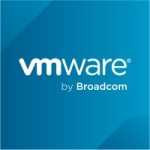What is our primary use case?
The solution is server virtualization software. We're using it to create virtual servers on our hosts and assign roles to each server separately. That's basically what a virtualization server does.
What is most valuable?
The solution's ease of use is the most important feature. It is very easy to use and implement.
It has very good fail-over features. You can have servers running in a fail-over cluster and whenever one server fails, you can migrate the workloads to the second one. This is also a very important feature to avoid service downtime or to minimize it at the very least.
The initial setup is pretty straightforward for the most part.
Microsoft has documentation that is easy to find, helpful, and readily available.
The stability is pretty good.
The solution can scale.
What needs improvement?
The solution has already improved for us. We have the older version, which was released in 2012, or the end of 2012. There were two releases after that, however, we haven't updated due to the fact that the upgrade costs are too high, and therefore we've migrated to Hyperflex.
The solution is heavily reliant on Microsoft's active directory for authentication, for coordination between nodes. Therefore, it inherits all the issues that are within the active directory.
If you have other virtualization solutions you have about 95% or 99% of the resources of the host available to you to assign to a virtual server. However, with Windows, that number is less than 95% and is more like 90%. There is a margin reserved for the server itself. That's a downside.
The solution needs to improve integration with hyper-converged infrastructure solutions, or SGI solutions. We were going with SGI for our next virtualization solution. I read reviews about the Hyper-V causing issues with SGI. When we decided to go with SGI, I decided against going with Hyper-V due to the integration issues that it had.
For how long have I used the solution?
I've been using the solution for about five years or so at this point, give or take. It's been a while. I'm currently using it now as well.
What do I think about the stability of the solution?
The solution is basically stable. There are not many faults happening in the four or so years that we had it running. Whatever happened was basically either due to the active directory or due to environments like the server itself that had power loss one time. It shut down and we needed to restart it. However, basically, that's an environment issue, not an issue inherent to Hyper-V itself. Otherwise, Hyper-V runs smoothly.
There is a small overhead of resources reserved for the server itself. Other virtualization solutions have less overhead than that. However, due to the fact that Hyper-V is running on Windows Server, there is a margin of overhead reserved for the server itself.
For the most part, however, it's reliable.
What do I think about the scalability of the solution?
The solution is quite scalable. If a company needs to expand, it can do so with relative ease.
Due to the fact that it's a virtualization solution, our IT team of three is managing it. However, as an ISP, we host some very important client services as well on the same solution. That means the number of users can go up to 100,000. From a management perspective, the management is just the three of us in the IT department.
We do not plan to increase usage at this time. Currently, with our version, we're planning to phase it out in our company within the next few years. That's mostly due to the fact that upgrade costs are too high and the solution is already an older generation, and we have decided to buy a fully new solution on new hardware. It will be Hyperflex.
How are customer service and technical support?
We haven't contacted Microsoft for support. We've worked with several Microsoft partners for support and they were responsive. However, we haven't reached out to Microsoft directly.
There is good documentation from Microsoft and this can help with troubleshooting as well.
Windows support in general is available online. It's as easy as Googling the issue that you have and you'll readily find solutions. It's not complicated. That part is positive. Other solutions are either too complicated or not very popular. In other products, if you need any support, you must either contact the vendor themselves or look for professional support.
How was the initial setup?
The solution is straightforward if you know how to use Windows Server. Hyper-V is basically a role on Windows Server. Therefore, you can use Windows Server for many roles on networking, on the active directory. Hyper-V is just one of them. You can just install the role and enable it and that's it. Basically, it's up.
The deployment is quite quick. It's a part of the server.
Initial setup process:
after installing the Windows Server, you select 'Add Roles & Features' from the 'Manage' Menu on the 'Server Manager' Window.
then you step through the wizard, selecting the 'Hyper-V' Role along with any features Windows requires for that role. a restart is recommended even if it's not required.
to implement a solution with redundancy, you can install the 'Failover Cluster' Role with the Hyper-V Role on 2 (or more) identical servers, and create a Failover Cluster out of the servers where VMs would "Fail Over" between servers.
then you need to set up a virtual switch to connect the VMs. you should set up at least 1 external switch to enable internet access and remote reachability for the VMs.
then you can create VMs and run them.
What's my experience with pricing, setup cost, and licensing?
The costs in regards to upgrading the solution are quite high and it deters customers from changing versions.
The old solution in 2012 was charging at a cost per server and the pricing was good at the time. In 2016, Microsoft upgraded the licensing, or changed the licensing scheme to per CPU within the server. Basically, if we wanted to upgrade to 2016, we would have had to pay double again for the same software. Therefore, we decided to go with another solution.
The solution offers perpetual licensing.
What other advice do I have?
We are just a customer or end-user.
We're using the version that is on Windows Server 2012 R2.
I'd advise other companies that this solution is to be considered, compared to other solutions. That said, there are solutions that are better and it depends on the scenario. It depends on the scenario, the scale you have, the implementation, et cetera. Companies should compare it to other solutions. Maybe the cost is high and performance isn't as good for them. I would suggest companies go with the VMware solution. That said, again, it depends on the scenario. In some scenarios, where a company is heavily dependent on Microsoft and Windows, it would be a better solution for them.
If most of your workloads are Windows Server, then buying a server host would give you free licensing for those workloads. The licensing would be included. Otherwise, if you buy another solution then you have to pay separately for each Windows license. The cost would be again, very high. For us, I can say maybe 70% or 80% of our workloads are Linux and other OS's, not Windows. It wouldn't make sense for us to go with Hyper-V. The cost would be too high. If you are implementing heavily into Windows Server, go for Hyper-V. If you have a different application or different type of application, then you'd be better off going with another solution.
I'd rate the solution at an eight out of ten.
Which deployment model are you using for this solution?
On-premises
Disclosure: My company does not have a business relationship with this vendor other than being a customer.

















